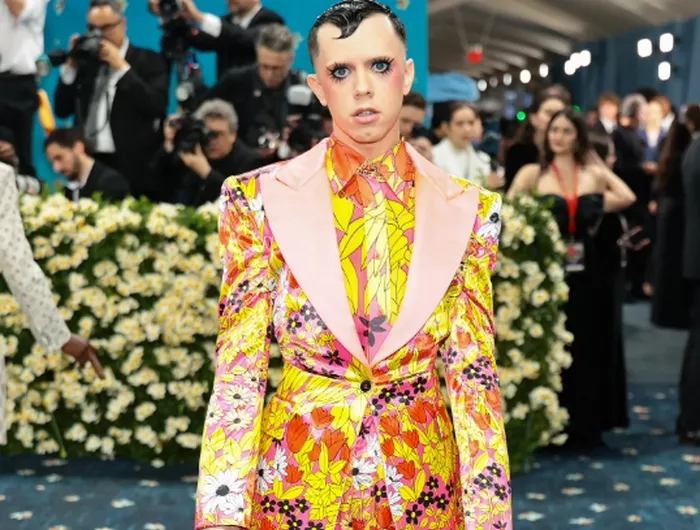The 2025 Met Gala has once again captivated fashion enthusiasts across the globe, flooding social media feeds with unforgettable imagery. Among the most notable appearances was Diana Ross, gracing the steps of the Metropolitan Museum of Art for the first time in over two decades. Following her was Zendaya, striking in a white three-piece Louis Vuitton suit, a tribute to Bianca Jagger’s iconic tailored wedding style. Designed by Pharrell Williams, the ensemble marked his ongoing influence as Louis Vuitton’s menswear artistic director. His contributions extended further that evening, dressing not only Zendaya but also stars like Sabrina Carpenter, Lisa, and Jeremy Allen White. Meanwhile, Chanel made its own statement by venturing into male styling, outfitting several fashionable men.
Although Louis Vuitton designers have blurred gender lines in the past—Virgil Abloh and Nicolas Ghesquière among them—this year’s Gala underscored a broader shift within the industry. In a time of turbulence for fashion, menswear is emerging as an area of renewed opportunity. With growing interest from audiences and a fresh, adventurous spirit among male consumers, menswear is no longer confined to traditional boundaries. This transformation, amplified by the spectacle of the Met Gala, raises important questions about the future direction of fashion houses and the potential of menswear as a driving force for growth.
The central exhibition of the evening, Superfine: Tailoring Black Style, provided cultural context to this emerging narrative. Co-curated by Andrew Bolton and guest curator Monica L. Miller, the exhibit explored Black style through the lens of dandyism, spanning from the 18th century to the present. This marked the Costume Institute’s first menswear-focused showcase in over twenty years and its first to address race directly. Bolton noted that the passing of André Leon Talley, a beloved figure and modern dandy, helped inspire the exhibit, which also reflects the broader cultural resonance of the Black Lives Matter movement. Since 2020, the Institute has acquired around 150 pieces from BIPOC designers, some of which are featured in the exhibition.
Given the exhibit’s focus, it was fitting that men took center stage on the red carpet, often dominating best-dressed lists. This shift is reflective of a growing cultural fascination with how men present themselves—an interest fueled by the rise of the “internet boyfriend” and the digital conversations around male celebrities’ style. Designers are responding accordingly. Wales Bonner, long celebrated in insider circles for its thoughtful menswear, had a breakthrough moment by dressing prominent figures such as co-chair Sir Lewis Hamilton, Tyler Mitchell, FKA Twigs, Jeff Goldblum, and Omar Apollo. The brand, under the direction of the press-shy but influential Grace Wales Bonner, saw its designs climb the best-dressed lists, suggesting that smart menswear choices on the red carpet may increasingly lead to tangible business gains.
Marc Jacobs also reentered the menswear conversation, nearly a decade after stepping away from designing for men. J Balvin wore Jacobs’ first menswear look in years, joining a lineup that included major female stars like Rihanna, Doja Cat, and Tracee Ellis Ross. The enthusiastic response could prompt Jacobs to revisit the category. While he has never been a cornerstone of menswear, the shifting tastes of modern male luxury consumers—more daring and expressive than ever—might provide the right moment for his return.
Chanel, typically associated with high femininity, took an unexpected turn by dressing male attendees like model Malick Bodian and stylist Ib Kamara. While the label did not present traditional menswear, it offered an intriguing reinterpretation of its iconic aesthetic on male bodies. This strategic ambiguity adds to growing speculation about whether creative director Matthieu Blazy might explore menswear under the Chanel umbrella. Recent campaigns featuring Kendrick Lamar and accessories sported by celebrities like Timothée Chalamet and Jacob Elordi suggest a widening appeal among male consumers. However, the core appeal lies in the deliberate refusal to conform to menswear norms. These men are not wearing menswear; they are wearing Chanel—an important distinction that lends the brand its mystique and cultural power.
Historically, Chanel has dipped into male styling under Karl Lagerfeld, who dressed Pharrell Williams on and off the runway and regularly included male models. The brand’s offerings like the Boy de Chanel beauty line and the Boy bag—named after Coco Chanel’s muse and partner—already enjoy popularity among men, particularly in the LGBTQ+ community. Yet launching a formal menswear line is a significant move that may not be immediately necessary. The current strategy allows Chanel to appeal to men without disrupting the essence of its brand identity.
Other brands have navigated this space with varying approaches. Miu Miu, for instance, has expanded its menswear presence through inclusive casting rather than product differentiation. Retailers like Ssense have responded by categorizing some Miu Miu items as menswear, even if the brand itself does not offer a dedicated menswear line. Conversely, Simone Rocha and Peter Do launched official menswear lines in response to consumer demand, particularly due to sizing and fit concerns from customers purchasing women’s clothing labeled as menswear. However, these efforts revealed that gender-neutral fashion, while theoretically appealing, faces practical challenges in the marketplace. Buyers and consumers still gravitate toward traditional gender merchandising, prompting designers like Rocha to commit fully to menswear collections by Autumn/Winter 2025.
The main takeaway from this gender-fluid evolution is clear: consumers are setting the pace, and successful brands are those agile enough to adapt. The 2025 Met Gala served as a vivid reminder that men’s fashion now holds as much cultural currency as womenswear. Even if not yet matching in sales volume, menswear commands attention, drives conversation, and boosts brand prestige. No longer operating on autopilot, the menswear category has awakened—fueled by bold designers, expressive celebrities, and shifting cultural expectations.
Related Topics
- The Women Redefining Fashion in Golf One Outfit at a Time
- How a 7-Piece Summer Capsule Wardrobe is Empowering Women Over 60
- Best Straight Kurta Sets for Modern Working Women

